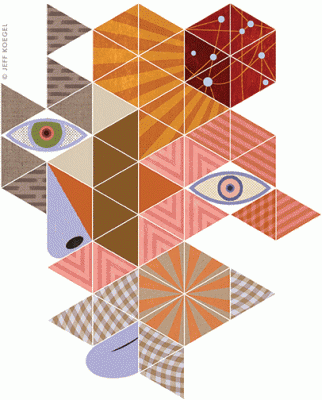
Darina Petrovsky’s first calling was as a classically trained pianist. Her second was as a nurse, focusing on older adults. Now the 27-year-old is hoping to combine the two. As a predoctoral student in the School of Nursing, she aims to explore the cognitive impacts of music in adults with mild cognitive impairment (MCI), with an eye toward developing a music-based intervention aimed at reducing the rate at which MCI progresses to Alzheimer’s and other forms of dementia.
There was just one problem. “When I started reading music-cognition literature,” she reflected recently, “I was lost.”
So she enrolled in Penn’s new certificate program in Social, Cognitive and Affective Neuroscience (SCAN). The four-course program is open to graduate and professional students who want to attain fluency in a field that’s notoriously prone to misinterpretation—in the academy as well in the popular press—but don’t actually want to enter it themselves.
“If your scholarly or professional work depends in any way on understanding the human mind, or understanding human behavior, then neuroscience is at least in principle relevant to what you’re doing,” says program director Martha Farah, the Walter H. Annenberg Professor in the Natural Sciences and director of the Center for Neuroscience & Society.
“The SCAN program is based on the belief that a handful of good, tailored courses, introducing you to the basic findings and methods of social, cognitive, and affective neuroscience, will get you most of what you need.”
Now in its second year, SCAN has enrolled about 20 students. They’ve ranged from philosophy students working on ethics and the philosophy of mind, to law students interested in criminal responsibility and biomedical device regulation.
A retreat in February provided a glimpse of what the students have been getting.
Christin Scholz, from the Annenberg School for Communication, was one of a handful to outline her research program before Farah and several other members of SCAN’s advisory board: associate professor of neurology Geoffrey Aguirre Gr’98 M’00; psychology professor Russell Epstein; and Joseph Kable Gr’04, the Baird Term Assistant Professor of Psychology.
Scholz’s specialty is public-health messaging campaigns. She’s trying to figure out what makes people share some kinds of public-health messages but not others. The recipients of such messages typically have limited insight into what’s influenced them, and how effectively they in turn influence others. Scholz hopes brain imaging will shed more light on that question. If brain scans were to reveal clues about the cognitive characteristics of messages that go viral, public health agencies might be able to design more effective campaigns.
One idea, she explained, is that messages that trigger recipients to think about themselves make people more likely to pass them forward in a persuasive manner. So it could be worthwhile to use an MRI scanner to look for activity in parts of the brain thought to be involved in “self-related processing” as subjects view and digest certain messages.
In a collegial feedback session, the SCAN advisers warned about a methodological pitfall that has snared many other researchers—most famously, perhaps, a group that in 2007 used fMRI data to draw “startling” conclusions (as Aguirre called them at the time) about how undecided voters really felt about that season’s presidential candidates. (For example, the brains of voters who said they disapproved of Hillary Clinton were supposedly “battling unacknowledged impulses” to like her, the authors alleged, in one of many claims that drew harsh criticism from Nature and dismayed many neuroscientists.)
“Reverse inference,” said Farah, using the term of art, “is the kind of inference where you say, ‘I see this part of the brain lighting up, and previous research has shown that self-related processing—thinking about yourself—lights up this part of the brain. Therefore, when I see this part of the brain light up, it must be self-related processing.”
That can be a useful rule of thumb, she continued. “But it’s not infallible. Because the parts of the brain that light up when you’re thinking about yourself—sort of the medial prefrontal area—may also light up when you’re thinking about, say, brushing your teeth. So when you see that part of the brain light up, you don’t know, is it self-related processing, or is it dental-hygiene related?”
In other words, reverse inference can be a recipe for drawing bogus conclusions. But as Kable pointed out, it can be helpful in framing useful hypotheses.
“[Say that] you see that this message is associated with this pattern of brain activity, which has previously been linked to self-related processing,” he said. “So that gives you the hypothesis that, say, this brain activity is also associated with that message being particularly impactful on you passing it on and sharing it. That gives you the hypothesis that messages that activate you thinking about yourself will be shared more, which is something you can test in the absence of neuroimaging. And if that works out, then you’ve actually learned something.”
Andreas Kuersten L’14, who completed the SCAN program during his last year of law school, shared a videotaped message about how the program has helped him professionally. As a law student he worked with assistant professor of neurology Roy Hamilton on a law-review article analyzing European Union regulation of cognitive-enhancement devices, and he is now expanding it into another article comparing it to the US regulatory framework.
“I’m also working on an article analyzing the neurological impacts of the torture methods outlined in the recent Senate torture report this past December,” he said, noting that his interests gravitate toward international affairs and national security.
“Next year, starting in the fall, I’ll be beginning a two-year clerkship with the Court of Appeals of the Armed Forces,” he said. “And during the interview process, the judge really keyed in on the SCAN certificate and the neuroscience training. More and more, judges are being faced with neuroscientific evidence. And if you have a background in that, that’s really quite useful.” —T.P.

